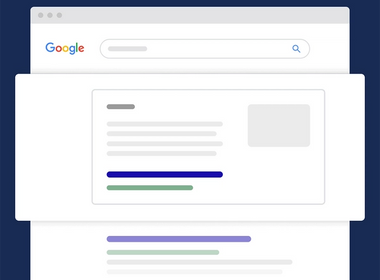The Featured Snippet Is Now Result #1: What This Means for SEO
Some interesting news! On January 22nd, 2020, Google rolled out a change to featured snippetsFeatured Snippets
Featured snippets are highlighted excerpts of text that appear at the top of a Google search results page in what is known as ‘Position 0’.
Learn more (FS), the information block that appears at the top of a search results page (SERP). If a site owns the featured snippet for a search, the URL in the featured snippet will no longer appear as a “standard” organic listing.
This is the snippet at the top of the SERP for best Brooklyn bagels:

Up until Wednesday, the result in the featured snippet would also appear as the first result on the first page of the SERP, but as Danny Sullivan, Google’s public search liaison, tweeted, “If a web page listing is elevated into the featured snippet position, we no longer repeat the listing in the search results.”
The case for making featured snippets just another result
Sullivan said the reason for the change was to “declutter” the results and produce a better user experienceUser Experience
User experience (or UX for short) is a term used to describe the experience a user has with a product.
Learn more. It’s safe to assume Google didn’t think this would be a very disruptive change because it was rolled out across 100% of pages globally, rather than tested incrementally.
Let’s say that this move kills CTR for URLs in the featured snippet box. Will more sites implement snippet-control markup to tell Google not to include that URL as a snippet?
Gennaro Cuofano asked if the change applies to knowledge panels, and Sullivan replied that different display types for snippets that are not knowledge panels (like snippets displayed on the right rail of a page) were being de-duplicated, again for a more simple, friendly UX.
Will this negatively affect CTR?
Result type reporting makes it easy to find URLs that own a featured snippet. You can then cross-reference this with CTR data from Google Search ConsoleGoogle Search Console
The Google Search Console is a free web analysis tool offered by Google.
Learn more to find out whether this update had a positive or negative impact on traffic. It will be interesting to see if there is an increase in the usage of snippet-control markup .
Let’s say that this move kills CTR for URLs in the featured snippet box. Will more sites implement snippet-control markup to tell Google not to include that URL as a snippet?
A much-cited Ahrefs study from 2017 shows that the introduction of the featured snipped has a negative impact on click-through, both for the first organic result and for the featured snippet. The decay rate for CTR on a SERP was almost like a law of physics five years ago. The first result generally got 30% of clicks, the second result got 25%, the third got 15% and so on until you get to the second page, where, as the old SEO joke goes, you can hide a dead body because no one will see it.
After the introduction of the featured snippet, the CTR for the top result was more or less split between the snippet and the first organic result. According to Ahrefs, the featured snippet got one-third of the original organic result’s click-through, and the organic listing itself got the other two thirds.
Sullivan tweeted in response to this line of questioning that “featured snippets drive a lot of traffic,” though a lot may still be less than what you got on the old page design.
Featured snippets drive a lot of traffic. That's why people often optimize for them. They also often tend to elevate pages that were further down the page to top position. But bottom line, there are options to not be featured, if people don't want: https://t.co/KpQdHGOKK2 (https://t.co/KpQdHGOKK2)
The Implications of Google Making the Featured Snippet Number One
The organic result that appears in a featured snippet will be pushed to the first result on page 2 of the SERP.
That is unless it doesn’t. It’s possible that the result will be replaced entirely by the snippet. Sullivan’s language in his tweet appears intentionally vague: “If a web page listing is elevated into the featured snippet position, we no longer repeat the listing in the search results…. Featured snippets count as one of the ten web page listings we show.” No mention of a double-listing there.
SERPs will now only have nine text listings
Before the change, the snippet was not counted as one of the ten results on a page. Now it is. Not only does this eliminate the chance for a double-listing, it also means there is less information real estate on every page.
Pro Tip – If you want to see the ‘true’ organic rank for a keyword, all you need to do is add ‘&num=9’ to your SERP URL, e.g.
https://www.google.com/search?q=what+was+the+bert+update&num=9
The snippet may appear on the top of every page, not just page one
Another possibility hinted at by Sullivan is the inclusion of a snippet at the top of all results pages, so a snippet at the top of page two, page three and so on to the googleth page. Does this mean a snippet on page two will be the first result on page two followed by nine other page two results? We’ll have to wait and see.
Reactions from Around the SEOsphere
This could be really impactful, but Conductor is here to help! The move has stirred a lot of conversation in the SEO industry and at Conductor. We took the temperature of some of the top minds in SEO to get more perspective.
Pat Reinhart, VP Digital Strategies at Conductor
The featured snippet (FS) update is wild, rolled out fast, and I have a mixed bag of feelings on it. On one hand, I do believe this is a fairer system to increase competitionCompetition
Businesses generally know who their competitors are on the open market. But are they the same companies you need to fight to get the best placement for your website? Not necessarily!
Learn more and not give sites a double bonus for having the FS and the traditional organic result. I truly believe that Google is aiming to give the best experience it can based on our evolving search habits and this lends itself to a more balanced approach.
The featured snippet (FS) updated is wild, rolled out fast, and I have a mixed bag of feelings on it.
On the other hand, this is going to hurt a lot of businesses. I have already seen major drops for sites across many verticals where they lost the traditional result. I am still waiting for the data on how traffic will be impacted, but I imagine it will be significant.
Discussions will turn to FS suppression strategies moving forward. It is not something that has been very top of mind for SEO’s because we’ve always been driving towards gaining the FS while maintaining the traditional result. It will be interesting to see how different businesses and verticals react to this moving forward.
Follow Pat Reinhart on Twitter: @askreinhart
Lily Ray, SEO Director, Amsive Digital
My first reaction is, this is probably not a positive change for SEOs. I assume that in most cases, there will be an immediate and clear decline in organic traffic for sites that hold the featured snippet (FS) position. This is particularly true for featured snippets that appear in the right sidebar on desktop where the click-through-rate is significantly lower. However, Danny Sullivan from Google just indicated that this right sidebar will be consolidated into the main results in the next month, which is promising.
One unexpected positive outcome of this update...is that Google can still rank *another* URL from your site in the organic results even if you already own the featured snippet for that result.
The change is positive in the sense that it “reduces clutter” in the search results by not listing the same URL twice. This may be good for users. However, I originally thought this would free up a space in the results for another listing to compete. It sounds like that is not the case; they are simply removing that listing from page 1, so there now will be 9 organic blue links plus a featured snippet.
One unexpected positive outcome of this update that some folks are already seeing is that Google can still rank *another* URL from your site in the organic results even if you already own the featured snippet for that result. You might even rank in position 1 with another URL. It’s unclear whether this is what Google intended, but it’s an interesting development that could potentially impact how we target our keywords and content.
Follow Lily Ray on Twitter: @lilyraynyc
The short- and longer-term impacts
The short term will inevitably see a drop in traffic for sites that own featured snippets. Some of our clients have already reported this. Hopefully, this has the result of increasing the diversity of results on page 1.
Long term, some sites may have to consider leveraging the “nosnippet” tag to restrict Google from displaying their content as a Featured Snippet, if they are noticing that this update caused significant traffic declines.
Who is best positioned to take advantage of this change?
At the moment, it’s unclear how marketers should take advantage of this change, other than monitoring the performance of their own featured snippets and the click-through rates of the pages for which they rank. However, I would recommend that marketers keep an eye on Google now displaying a separate URL from the same domain that ranks in the Featured Snippet within the top 10 results, as this may be an area of opportunity.
John Shehata, VP Audience Growth, Condé Nast
It is not yet clear how this will impact traffic on the majority of sites. Historically, featured snippets “stole” traffic from organic results in the SERPs, but sites that had FS + Organic results benefited by having a double listing on the first page of Google.
The impact on overall traffic will depend on the ranking of the regular result. If you had a FS and ranked #1 in organic results, you get an additional 20% CTR from that listing on average. It is important to note that some of the Featured Snippets will not trigger deduplication of organic results like Top Stories, Video Featured Snippets and interesting finds. We need to go back and compare traffic and CTR numbers before and after to measure the impact.
What will the short- and longer-term impacts be?
Featured Snippets is a double edged sword. While it is great to be featured as #1 on Google SERPs, and the feature itself is great user experience, in some cases the featured snippet performed worse than #1 results due to the amount of information provided by Google.
What’s more, some of the FS are not accurate since it is completely driven by AI/ML. And let’s not forget about voice search and assistant devices where FS are the only result they get in many cases.
There is a lot of confusion about Feature Snippet Deduplication, I wish Google give us pre-warning on SERP changes in the future.
Who do you think is best positioned to take advantage of this change?
One of the ideas I have is to reduce the size of the max-snippet tag that controls the text size displayed in the Featured Snippet. If you reduced enough you will lose the Featured Snippet. My question to Google is, will this give you your regular snippet (blue link) back? Google replied back to my tweet and confirmed that removing the FS will get you back your regular listing.
Word of warning, don’t implement this on a wide scale, you have to do a lot of A/B testing to see if this approach will benefit your traffic. It also depends on where you rank organically before the FS ranking. A good hack by Kevin Richards can help find out the previous ranking. If your previous ranking is below #5, I would leave the FS as is. If it is above #5, I would test with the max-snippet tag to remove the FS and see if traffic numbers improve.
There is a lot of confusion about Feature Snippet Deduplication, I wish Google give us pre-warning on SERP changes in the future.
Follow John Shehata on Twitter: @jshehata
Martha van Berkel, CEO of Schema App
Google’s featured snippet announcement begs the question, “Do you want the featured snippet?”
Some SEOs are seeing that the second result results in more clicks.
There is also the element of control: with structured dataStructured Data
Structured data is the term used to describe schema markup on websites. With the help of this code, search engines can understand the content of URLs more easily, resulting in enhanced results in the search engine results page known as rich results. Typical examples of this are ratings, events and much more. The Conductor glossary below contains everything you need to know about structured data.
Learn more, you can more predictably influence the specific look and content of the results’ rich snippet; whereas featured snippets you have no control, and Google decides what image, content and URL to show.
Overall, I think that Google is trying to diversify results, which in the long run, I believe is the right thing to do.
Follow Martha van Berkel on Twitter: @marthavanberkel

![Patrick Reinhart, VP, Services and Thought Leadership, [object Object]](https://cdn.sanity.io/images/tkl0o0xu/production/9bc72298b24ad01b732de4c3376f79546d20f81c-3542x3542.png?fit=min&w=100&h=100&dpr=1&q=95)
![Lily Ray, Sr. Director of SEO & Head of Organic Research, [object Object]](https://cdn.sanity.io/images/tkl0o0xu/production/0d9e4ea698af1b14676e83dd11ebee1e89d46be1-800x800.png?fit=min&w=100&h=100&dpr=1&q=95)
![John Shehata, VP of Audience Development Strategy, [object Object]](https://cdn.sanity.io/images/tkl0o0xu/production/d5e851defe22105cbb9a025f613c135f8a62d6cd-800x800.png?fit=min&w=100&h=100&dpr=1&q=95)






